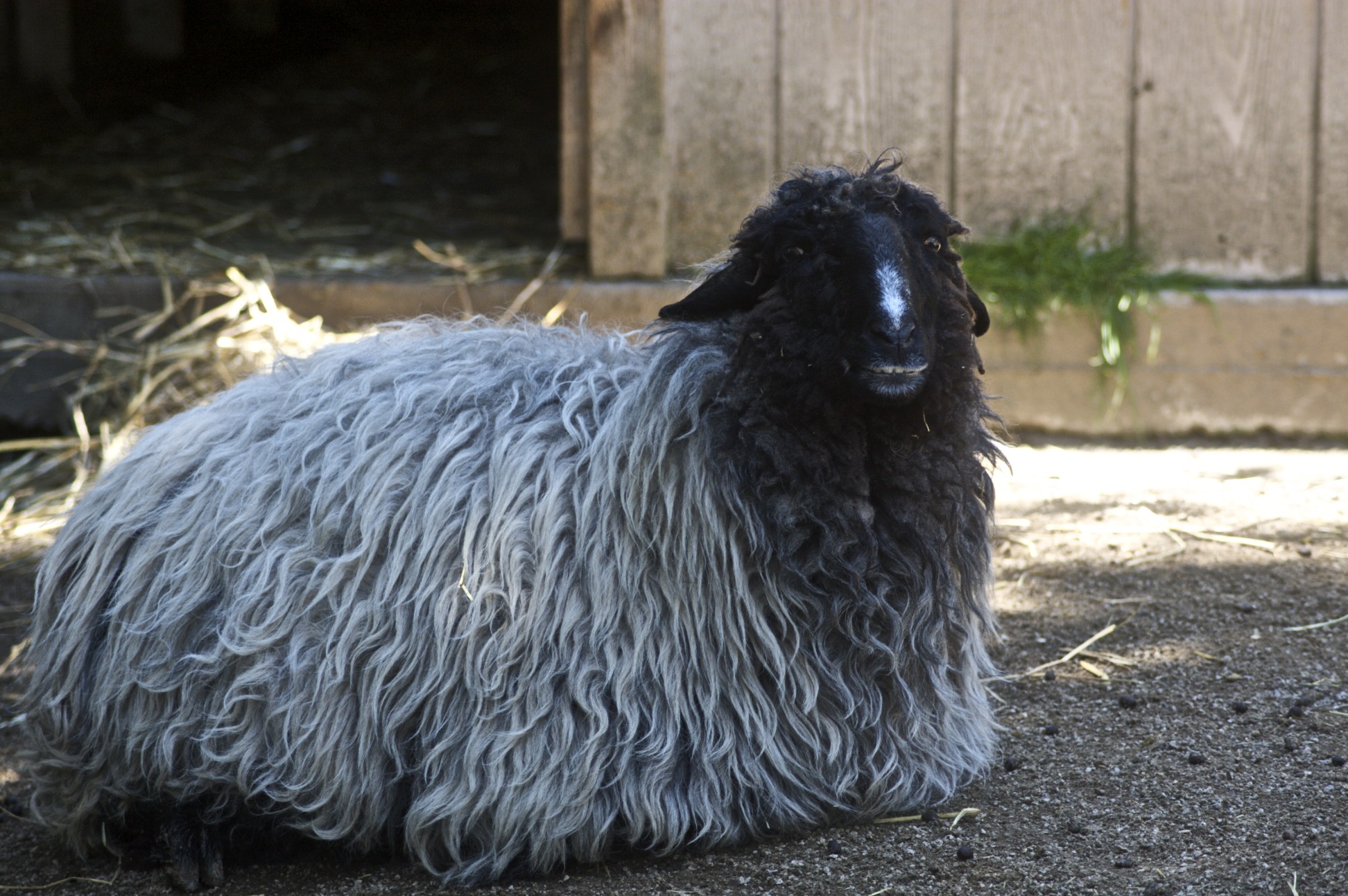Karakul

Karakul
With a growing interest in the fiber arts in the United States, there has been an increased interest in the Karakul sheep. It is a specialty breed that is finding its niche as part of the cottage industry. The fleece is seen in a variety of natural colors. In its native region the colors are called by the following names; Arabi (black), Guligas (pink-roan), Kambar (brown), Shirazi (grey) and Sur (agouti). Occationally individuals are white or pied. The Karakuls differ radically in conformation from many other breeds. They are of the fat broadtailed type of sheep. In their large tail is stored fat, a source of nourishment, similar in function to the camel’s hump. The narrow appendage below this fat sack is often recurved, giving an S shape. Karakuls are medium-size sheep.
The Karakul may be the oldest breed of domesticated sheep. Archeological evidence indicates the existence of the Persian lambskin as early as 1400 B.C. and carvings of a distinct Karakul type have been found on ancient Babylonian temples. Native to the plains of Central Asia, Karakuls differ radically in conformation from most other American breeds. They are of the fat broad tailed type of sheep. In their large tail is stored fat, a source of nourishment, similar in function to the camel’s hump.
In Central Asia and South Africa , large flocks of Karakuls are still raised for pelt production from very young lambs. The skins of baby lambs with their tightly curled wool are used in the “Persian lamb” fur trade. Karakuls were introduced to the United States between 1908 and 1929. They are a specialty breed in the U.S. Their fleeces, long and colorful, are prized by hand spinners. Karakul wool is the wool upon which the art of felting evolved. The Karakul classified as a “rare” breed by the American Livestock Breeds Conservancy.